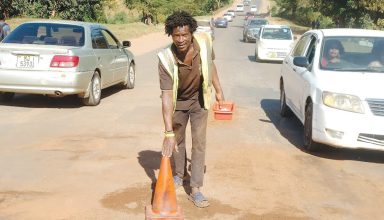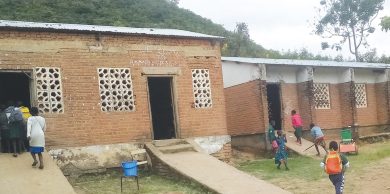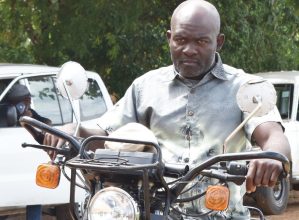Lilongwe Water Board struggles to attract financiers

The Lilongwe Water Board (LWB) says it is failing to get funding from major financiers and development partners because its tariffs are so low that the board is struggling to finance its new capital investments, The Nation has learnt.
According to LWB spokesperson Trevor Phoya, although the board recently adjusted its tariff structure by an average of 50 percent, from K194 to K291, not enough money will be raised to fund its entire urgent capital works.
Says Phoya: “As a board, we are doing our best to meet all the demands of our customers, but we are having difficulties to attract more financiers for our projects. One of the conditions for the development partners and financiers, such as the European Investment Bank, is to make available investment capital to the water board within the ability of the organisation to contribute a percentage towards a proposed project.
“The financiers look for financial viability of an organisation, whether it is able to make profits to ascertain its ability to pay back a loan. In the case of the board, the tariff structure could hardly meet the operation costs, leaving nothing for investment, let alone for repayments of loans. This means that donors or financial lending institutions will always find it difficult to work with the board.”
Phoya explains that the board still uses the lowest tariffs in Malawi despite the recent adjustments, adding that all adjustments are normally approved by government.
“The population of Lilongwe City has grown spontaneously in recent years and this has led to increased water demand whereas the supply infrastructure has remained virtually the same.
“Demand is at 120 000 cubic metres per day while production capacity remains at 95 000 cubic metres per day. There is, thus, a need for urgent investment for additional production and supply infrastructure. A tariff structure that allows for full cost recovery and surplus for investment is, therefore, required,” he says.
The LWB spokesperson adds that for the past few years, the board has been submitting its tariff adjustment proposals to government which, in turn, would often approve these after further readjusting the tariffs downwards from the original proposals.
“Of course, government would have good reasons for doing that. However, over time, it has meant that the tariff structure for the board, especially of the domestic customers, has had a restricted movement,” says Phoya, who added that despite the challenges it is facing, the board has embarked on several projects aimed at minimising water shortages some of its clients are facing.
According to him, the board has just constructed two reservoirs at the Old Airport, which will be commissioned before the end of this year to help minimise water supply challenges that residents in the western side of the city have been facing.
Areas to benefit from this project include Mbabvi, Air Wing, Natural Resources College, Chitedze, Njewa, Area 47 Sector 1, and part of Area 49, Mtsiliza, Mtandire, Likuni and part of Chinsapo.
“We have just embarked on a treatment plant extension project at our main treatment plant in Area 3. The project will increase the production capacity of the board by an additional 30 000 cubic metres per day, thereby helping the board to meet the city’s water demand from now to 2016,” says Phoya.
The board is also conducting a study on the possibility of utilising groundwater in some parts of the city.
“This would also improve the water supply and two boreholes have already been sunk in Lumbadzi and further studies are currently underway,” Phoya explains.
On the issue of forest destruction at Dzalanyama Range, the main water source for Lilongwe City, Phoya says the board is concerned and something needs to be done now to reverse the trend.
“The current state of Dzalanyama is catastrophic. There is wanton cutting down of trees and the catchment area has been badly damaged.
“Human activities like charcoal burning seem to be the order of the day at Dzalanyama. As a water board, we are concerned, as this means the catchment can no longer yield the same amount of water it was yielding. A lot of silting is now taking place in our Kamuzu Dam I and II as a result of this,” laments Phoya.
In addition to the damage of the catchment area, there are numerous developments along the Lilongwe River course. For example, in 2005, the Malawi Government gave a 99-year lease of land near LWB abstraction point for animal farming.
“The farmer wants to establish a dairy farm on the land. This is a disaster in waiting since the land in question straddles Lilongwe River between Malingunde Dam and the water treatment plant in Area 3. Lilongwe Water Board is imploring for a halt in further developments along the Lilongwe River which would further pollute water and pose a danger to the general Lilongwe City populous,” says Phoya.
He points out that if the trend is not checked, it will spell doom for the city, since Dzalanyama is the only source of water for the board.
“There is a danger that in the very near future, if nothing is done and if there be no adequate rains, Lilongwe City would soon run dry. Plans to construct another water source at Diamphwe would also be in jeopardy, as the dam would also have its source in Dzalanyama,” he says.
Spokesperson for the Department of Water in the Ministry of Agriculture and Food Security James Kumwenda concurs with Phoya that if the environmental degradation taking place at Dzalanyama remains unchecked, it spells doom for Lilongwe City.
He says the ministry is working closely with the board to deal with the problem of environmental degradation at the Diamphwe River, another source of water.
“Currently, we have engaged a consultant to help us see how we can protect the Diamphwe-Linthipe catchment area, the Rukuru and Lufira catchment area and the Lake Chilwa area as well,” says Kumwenda, adding that government has approved several projects the board has embarked on, including the feasibility studies at Diamphwe on the boundary between Dedza and Lilongwe.






On Forest degradation. How do people expect forests to be well protected when the institution that manages and owns these forests is not well supported. Why waste money on consultants when the same money could have been given to the DFO Lilongwe so that he can put in place confiscation and patrol campaigns. These work if well supported.